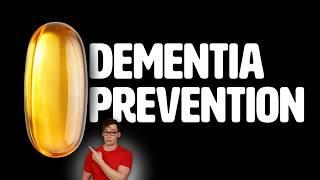What If We Got Sunlight All Wrong? The Truth About Vitamin D & Chronic Disease
Mark Hyman
Jul 14, 2025
Mindsip insights from this episode:
Understand melanoma's risk beyond sun exposure
Unlike basal and squamous cell cancers, the deadly skin cancer melanoma is not as strongly linked to sun exposure and can occur in non-sun-exposed areas.
Maintain vitamin D levels above 50 ng/mL to eliminate COVID death risk
An Israeli study found that if your vitamin D level was over 50 ng/mL, your risk of death from COVID was zero.
Avoid sunscreens with vitamin A to reduce skin cancer risk
You should be particularly careful with sunscreens containing vitamin A, as it can paradoxically make skin cancer more likely.
Perform simple self-test for vitamin D deficiency
You can perform a simple self-test for vitamin D deficiency by pushing your thumb hard on your shin; if it hurts, you are likely deficient.
Address chronic nutrient deficiencies to prevent long latency diseases
Chronic, low-level nutrient deficiencies can lead to "long latency deficiency diseases" like osteoporosis and cancer over many years.
Maintain vitamin D levels above 60 ng/mL to lower breast cancer risk
Women with vitamin D levels over 60 ng/mL had an 82% lower risk of breast cancer compared to those with levels under 20 ng/mL.
Boost vitamin D levels as aging reduces skin production
The average 70-year-old's skin creates only 25% of the vitamin D from sun exposure that a 20-year-old's does.
Aim for optimal vitamin D levels above 45 ng/mL
Standard lab reference ranges for vitamin D reflect a deficient population, whereas the optimal level for health should be over 45 or 50 ng/mL.
More from
Mark Hyman
Why Love Feels So Hard — And How to Finally Feel Safe in Your Relationships (with Jillian Turecki)
Stop Blaming Salt: Fixing High Blood Pressure by Treating the Root Cause
The Future of Medicine Is Energy: Dr. Martin Picard Explains
The School Lunch Revolution: Nourishing Minds, One Meal at a Time
Transform Your Health Like Miranda Kerr: Inside Her Daily Routine
You also might be interested in
One Fat Can Prevent Dementia — If You Eat It Long-term
Thyroid function and hypothyroidism: why current diagnosis and treatment fall short for many, and how new approaches are transforming care | Antonio Bianco, M.D., Ph.D.
This Is Why Soda Spreads Cancer in your Body
Dementia Rates PLUNGED in Study of 1 Million People
The Fastest Way to Get Alzheimer’s (Most People Do This Daily) | Dr. Dale Bredesen











